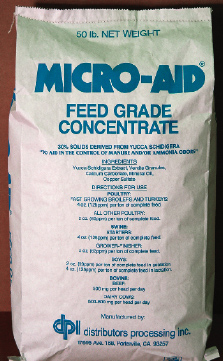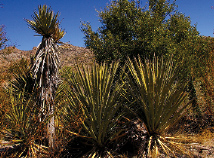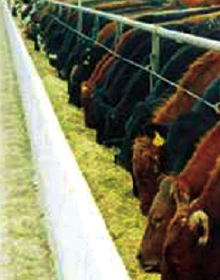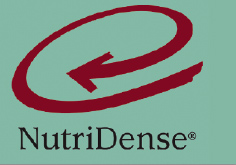
Micro-Aid is an all natural,
environmentally safe additive that has stood the test of both industry
and university evaluation for over 40 years, according to the company.
DPI Global
 |
Micro-Aid is an all natural, environmentally safe additive that has stood the test of both industry and university evaluation for over 40 years, according to the company. Leading scientists have classified Micro-Aid in the safest of classifications, “Generally Recognized as Safe,” thus it requires no withdrawal period.
Extensive research in multiple species including swine, dairy, beef and poultry consistently demonstrates environmental and performance benefits with Micro-Aid usage.
Micro-Aid works to promote a healthier gut environment by reducing intestinal ammonia that can damage absorptive cells. Reduced damage to these intestinal absorptive cells improves their capacity to digest and absorb dietary nutrients, thus improving dietary nutrient utilization. Better dietary nutrient utilization means fewer nutrients such as ammonia, hydrogen sulfide, and phosphorus being excreted into the environment. Reduced generation of offensive gases means a better environment for enhanced animal performance, as well as better health and well-being for animals and workers alike. Reduced nutrient excretion also means better environmental stewardship by the producer.
Since Micro-Aid is not absorbed by the animal’s gut, it is excreted into the waste management system and continues to work by enhancing the microbial ecosystem that is responsible for reducing volatilization of offensive gases (eg, ammonia, sulfides, phenols) and accelerating waste breakdown, as well as improving cleanup of building pens and equipment.
www.dpiglobal.com
Desert King International
 |
Yucca schidigera has been used for many decades as one of the main natural additives for ammonia and odor reduction from manure in swine and poultry operations in the USA as well as in Europe, Asia and South America.
Quillaja saponaria is also an alternative to Yucca schidigera and has the same ammonia and odor reducing properties. This is mostly due to the presence of saponins and some complex polyphenols that directly bind ammonia and also lower the moisture content of manure reducing the emission of odors due to ammonia and other volatile products.
Saponin containing plants such as Yucca schidigera have also been shown to increase propionate production while reducing methane production in ruminants.
www.desertking.com
Zeolite
 |
Zeolite is widely being used by livestock farmers as a feed additive for beef cattle, dairy cows, swine, poultry (boilers and egg production) and sheep. Since zeolite is the world’s only naturally-occurring negatively-charged mineral, a great number of benefits in the feed process can result from this basic chemistry, according to Canadian Zeolite.
Zeolites are inert, stable and non-toxic. This, combined with their other unique characteristics, allows them to be used as feed additives with multiple, complementary benefits. Zeolite will also absorb odors from spoiled grain or feed grain and will substantially reduce odors in enclosed animal facilities.
When zeolite is fed to the animal it absorbs much of the ammonia generated from the NPN. It acts as a reservoir and slow release mechanism for the nitrogen. This can allow the feeding of up to four to six times more NPN.
During rumination, a portion of the contents of the first stomach is returned to the mouth for additional chewing and saliva additions. Saliva introduced during mastication contains sodium which replaces the ammonium. This results in the slow release of the un-reacted ammonia which is then converted to protein amino acids by the microorganisms.
The introduction of zeolite into animal feed is said to improve animal growth and weight gain by increased food conversion rate efficiencies (less feed required per pound of weight gain). The strong affinity for ammonium provides superior odor control and a healthy environment. It also protects the penetration of ammonia into the bloodstream. Zeolite is a rumen buffer for the total digestive tract of high performance dairy cattle. Higher CEC means more buffering. It provides increased NPN for ruminants and improves rumen microbial activity.
www.zeolite.ca
Agroin
Agroindustrias El Alamo SA de CV (Agroin) is a Mexican company that, since 1983, has farmed and harvested the Yucca schidigera and industrializes it in order to obtain products that are widely used in the farm, food and cosmetic industries. Its products are distributed in more than 22 countries, where they’ve had acceptance for their effectiveness and efficiency, according to the company.
The company’s Biopowder is a natural feed additive for livestock that is used to control odors, ammonia and other gas emissions, which can be detrimental to livestock performance.
The use of Yucca schidigera extract in powder form in the swine’s feed during the productive cycle lowers the noxious gas levels, mainly ammonia, and as a consequence, productive parameters are improved, mainly the feed conversion and weight gain, says the company.
When Biopowder is included in swine feed, the saponins and glycocomponents within Biopowder enhance animal performance by binding atmospheric ammonia, hydrogen sulfide and other gases that cause odors. It reduces offensive odors, improving work conditions as well as animal welfare.
www.yucca.com.mx
DSM Nutritional Products
MicroSource S is a heat-stable microbial feed additive that contains organisms selected for their ability to improve the decomposition of stored swine manure.
MicroSource S microorganisms consume the undigested feedstuffs in manure reducing the production of odor-causing compounds. The MicroSource S microorganisms were selected for specific traits, such as stability and their metabolic byproducts. The unique combination of microorganisms in MicroSource S are patented and DNA fingerprinted for quality control. This ensures consistent product performance every time.
MicroSource S is added to all phases of swine feed at a single rate per ton of finished feed. The inclusion rate is the same, regardless of stage of growth or manure handling system. The reason for this is that MicroSource S is not providing nutrients to the pig but it is consistently inoculating every gram of feed.
It is available to feed manufacturers for use in formulating concentrates and premixes. In addition, MicroSource S is stable in both meal and pelleted feeds (heat-stable).
MicroSource S begins to work by providing a source of live micro-organisms in the gastrointestinal tract. These micro-organisms begin producing enzymes and bacterins in the pig and end up distributed in every fraction of manure produced. This allows the decomposition to start as early as possible, and continues as the manure lands on the floor and is collected into the manure handling and storage area.
When MicroSource S is added to the ration of the swine feeds, the microbial decomposition process of the manure is altered. MicroSource S Bacillus do not produce ammonia, volatile fatty acids or volatile sulfides—three leading components of objectionable odor. They do increase the decomposition rate of solids reducing odors and making the manure less sticky, which leads to less buildup and optimum cleanup.
www.dsm.com
Helfter Feeds
DUA from Helfter Feeds is a livestock feed supplement that plays a major role in enhancing bioavailability of nutrients and valuable nitrogen returns in organic waste.
DUA neutralizes the acid binding properties of high protein feedstuffs and unleashes the positive energy from nutrients to enhance fermentation and digestion, according to the company.
It influences aerobic bacteria colonization and oxygen to increase nitrification, which was proven to increase available nitrogen values in organic waste, says the company. This accounts for much less liquid manure applied per acre to attain needed available nitrogen goals and greatly reduces the phosphates applied in liquid manure.
www.helfterfeeds.com
NutriDense

|
Nutritionists and swine producers continue to look for ways to improve nutrient utilization and decrease nutrient output in manure. There are three things nutritionists can do to directly change manure nutrient outputs.
- Nutritionists can formulate closer to the animals’ requirements.
- They can use additives that enhance the digestion and utilization of dietary ingredients.
- They can utilize value-added ingredients with a higher availability of nutrients.
NutriDense corn is an example of a value-added ingredient with a higher concentration and availability of nutrients than conventional #2 yellow dent corn (YDC). NutriDense corn contains more protein and has greater quantities of essential amino acids, energy and available phosphorus than YDC, says the company.
NutriDense alone in a ration can reduce supplemental protein, fat and phosphorus and allow nutritionists to formulate more concentrated rations to drive animal performance. Recent swine research demonstrated that the protein and energy in NutriDense are digested better than similar YDC rations. The end result of the improved digestibility of NutriDense corn would be fewer nutrients in the manure and more nutrients available to the animal for maintenance, growth and production.
Since corn is the largest single ingredient in North American monogastric diets, it makes sense to maximize the nutritional value of corn to decrease the manure nutrient output, says the company. NutriDense allows producers to control what is fed to animals to a greater degree and to help minimize the manure nutrient output.
www.nutridense.com
SHAC Environmental Products
SHAC’s Feed Additive for hogs reduces manure odors and dangerous gases, and creates safer and more pleasant conditions for livestock, operators and neighbors, says the company.
The vision of SHAC Environmental Products Inc is to provide natural products, processes and knowledge that restore and enhance the ecosystem to sustain nature’s circle of life. SHAC Environmental Products are 100 percent natural and free of toxic chemicals.
SHAC products do not provide a “quick fix” to symptoms of organic environmental problems. They work at a microbial level to create an equilibrium in the life cycle. The company offers solutions from feed to field from pond to tap, enhancing all the related ecosystems as they work.
Although similar in properties, each product is specifically prepared for a particular market application.
www.shac.ca